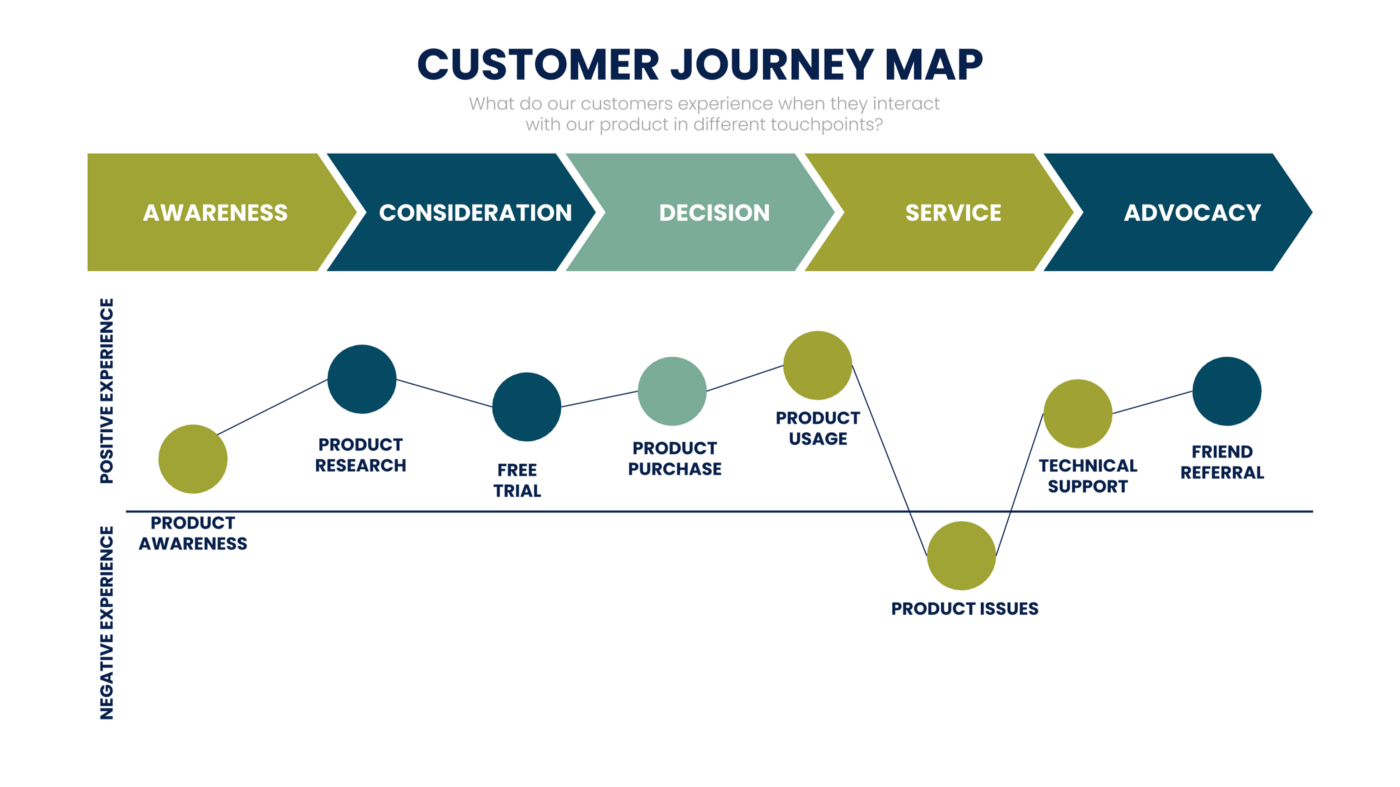Customer Journey Map: the stages of mapping
The Customer Journey Map is a visualized version of the customer’s relationship with products or the brand as a whole. Such a map is developed on behalf of the consumer and is in the form of a graph.
CJM should include a number of important elements:
– a list of the steps a consumer takes before making a purchase;
– channels used to communicate with customers;
– emotional component – feelings and expectations of the client, the motivation that guides him at each stage of interaction with the brand.
The Journey Map should not be confused with the sales funnel, as the map is a broader concept. In this case, a large number of features are taken into accounts, such as consumers’ fears and problems, their way of life, and the goals they set before making a purchase.
Thanks to the map, marketers can more accurately identify their target audience, to understand what exactly the client needs. Besides, the analysis of consumer behavior provides a huge layer of data to improve service, positioning, and other components of a successful business. CJM shows the mistakes when they can still be corrected and are not critical for the company. Having made a map, you can see why customers abandon your product or service. This can even be due to an unfortunate office location, inconvenient parking, or access to the store.

The Customer Journey Map helps businesses solve these problems:
– improving communication with the target audience, finding the best channel for this;
– improving the product or service in terms of how they help solve consumer problems;
– presentation of a new product;
– increasing customer loyalty, customer retention, increasing the level of trust.
The first thing to start developing a CJM is a portrait of the client. For this purpose, a generalized image of the participant of the target audience is made, but it should be as close to reality as possible. It is necessary to take into account gender identification, age of the client, social status, habits, and interests. Data for this should be taken from CRM, customer databases, and information from analytical services, such as Google Analytics. A good approach would be to conduct interviews with loyal customers. In some situations, several portraits need to be drawn, if the target audience includes consumers of different ages.
The second step is compiling a customer journey, which takes into account how exactly the customer chose the product, under what conditions he or she developed a need for the product, how he or she learned about your company, and other important points. To gather this information, conduct detailed interviews with customers who have recently made a purchase.
For ease of use, there are template solutions for compiling a Customer Journey Map. It is important to understand that the more detailed and accurate the map is, the better the chances of attracting new customers and retaining them.
